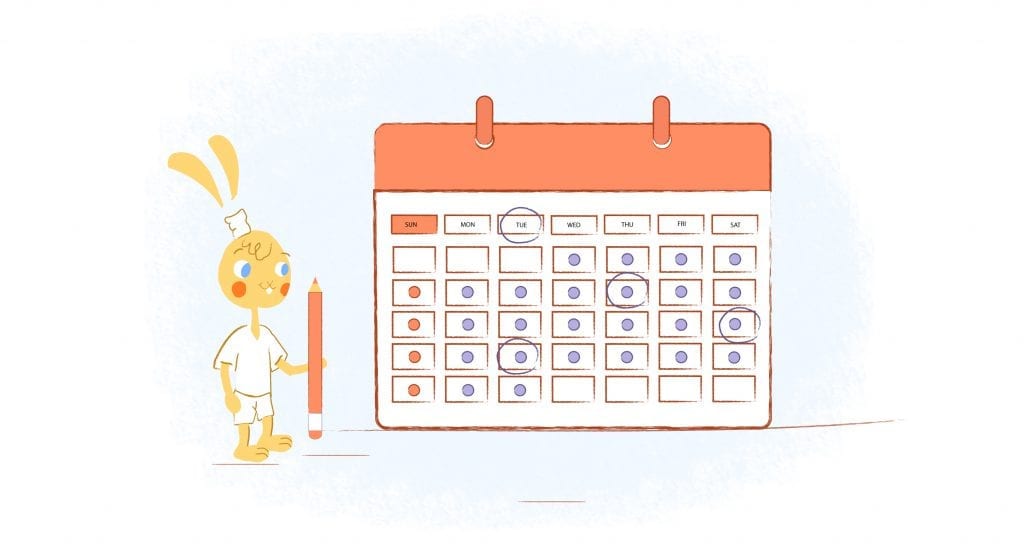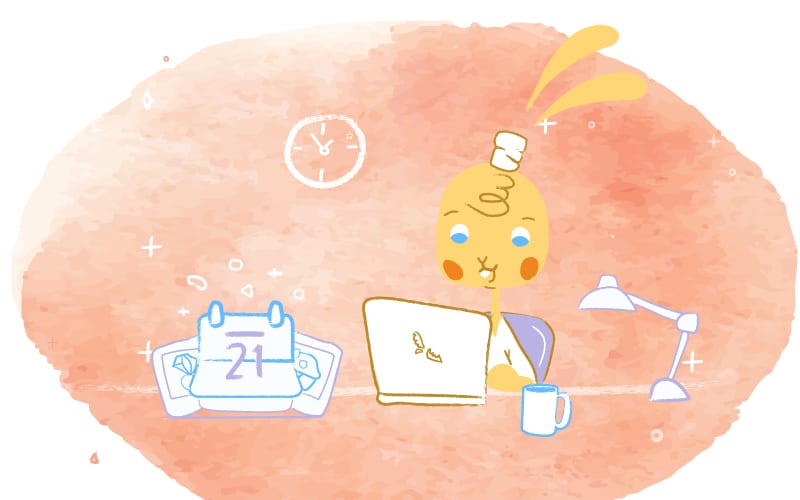

What’s the bane of every worker’s existence? The answer will almost always be Meetings.
Even though they are essential for brainstorming and collaboration, they can quickly become time-consuming. According to research, the average employee attends 62 meetings a month. Besides that, 31 hours are wasted on unproductive meetings. The result? We have a full calendar of inefficient meetings.
Additionally, 90 percent of employees view meetings as “costly” and “unproductive,” according to a meta-analysis of more than a decade of research. Reducing 40 percent of meetings increased employee productivity by over 70 percent.
But, imagine if you could improve the efficiency of meetings and reclaim your time. The answer lies in Artificial Intelligence (AI). In fact, one of the biggest benefits of using Copilot, Microsoft’s generative AI assistant, was that it reduced the time they spent in meetings — according to research based on a survey of 1,300 users. In 10 or more weeks of using the tool, 37 percent said they attended fewer meetings.
Having said that, let’s take a closer look at why meetings are harmful and how AI could help.
The Detrimental Effects of Meeting Mania
As a tool for progress, meetings are essential to collaboration. But, at the same time, excessive meetings can kill productivity. Moreover, individuals and organizations can suffer from meeting overload in the following ways:
- Reduction in individual productivity. Meetings have the most significant impact on an employee’s work. According to a Korn Ferry survey, two-thirds of workers report that meetings and phone calls hinder their productivity. In addition, 67 percent of workers said meetings distract them from their work.
- Decision fatigue. After back-to-back meetings, participants may become overwhelmed with information and opinions, making sound and clear judgments difficult.
- Time and resources are wasted. There is no point in holding meetings without a clear agenda, a strong facilitator, or clearly defined outcomes. After all, unnecessary meetings take up valuable time the employee could devote to core tasks.
- Meetings disrupt our workflow. Constantly switching contexts between tasks can be cognitively taxing. In a widely cited study by the University of California, Irvine, it takes 23 minutes to recover focus after an interruption. You can lose significant chunks of time regaining focus if you attend multiple daily meetings.
- Disengaged employees. It’s easy for people to get disengaged and frustrated when their calendars are crammed with unproductive meetings. Ultimately, this will result in a decrease in morale, a reduction in creativity, and a higher rate of turnover.
Every minute spent in a wasteful meeting eats away at productivity and creativity, according to an HBR article. In addition, scheduling conflicts prevent people from thinking deeply. Consequently, they arrive at work early, stay late, or take advantage of weekends for more contemplation.
The dysfunctional nature of meetings may also affect organizations’ market share, innovation, and employment stability.
AI to the Rescue: How Artificial Intelligence Can Save Your Schedule
The use of artificial intelligence is transforming many aspects of work. Managing meetings is no exception. In the battle against meeting overload, AI can be your knight in shining armor:
- Smart scheduling. Scheduling tools powered by artificial intelligence can analyze calendars and identify scheduling conflicts. Additionally, it can suggest meeting times that are convenient for everyone. By eliminating back-and-forth email chains, meetings can be scheduled more efficiently.
- Automating the meeting agenda. AI can analyze communication threads, past meeting notes and minutes, and project documents to generate draft agendas. As a result, time can be saved, and agendas are focused on the most important topics.
- Action items and meeting summary. AI assistants can transcribe meetings, identify critical decisions, and outline action items. Because of this, there’s no need to take notes after meetings, and everyone’s on the same page.
- Recommendation engines for meetings. AI can decide whether a meeting is necessary by analyzing communication patterns, project details, and team member expertise. This helps identify situations where asynchronous communication may be more beneficial, like email or project management software.
- Meeting optimization and analytics. Meeting data can be analyzed using artificial intelligence to identify patterns and trends. Organizations can identify areas for improvement by analyzing meeting activity and implementing strategies to improve meeting effectiveness.
Beyond Automation: The Human Touch of AI-Powered Meetings
While AI can automate many tasks and streamline the meeting process, humans remain crucial. While AI can be a powerful tool, it cannot replace the value of face-to-face interaction, brainstorming sessions, and teamwork.
The ideal scenario? AI handles administrative responsibilities while freeing up human resources for creative problem-solving and strategic discussions. We can use artificial intelligence to make meetings more efficient, focused, and productive.
Building a Better Meeting Culture with AI
Although AI can reduce meeting overload, it is only one part of the solution. To truly transform your meeting culture, consider the following steps:
- Be ruthless when it comes to meeting requests. Don’t attend meetings if the agenda is unclear or your presence isn’t necessary. If necessary, suggest alternative ways of contributing politely.
- Define the purpose of the meeting clearly. Is a meeting the best way to accomplish this goal? Can information be communicated asynchronously or via a quick video conference?
- Clearly define meeting guidelines. Set time limits and determine the optimal number of attendees for each meeting. Communicate non-critical updates asynchronously.
- Only invite essential participants. Meetings with large attendance often lack focus. Determine who the key decision-makers are and who actively contribute to the discussion.
- Block out focused work time. Plan dedicated blocks of time for focused work on your calendar. This will allow you to focus on deep work tasks that require your full attention.
- Take advantage of asynchronous communication. Use project management platforms and communication channels to share updates, ask questions, and collaborate outside of formal meetings.
- Time boundaries should be respected. Stick to clear start and end times for meetings. This will allow everyone to plan their day effectively.
- Focus on outcomes. There should be a clear objective and a defined outcome for meetings. You should hold attendees accountable for action items and track their progress toward goals.
- Lead by example. Make sure you model good meeting behavior as a manager. Follow the agenda, make sure meetings start and end on time, and schedule them strategically.
Using AI and better meeting culture, you can make meetings more valuable tools for collaboration rather than annoying interruptions.
The Future of Meetings: Collaborative and Efficient
AI has the potential to transform meetings from time-sucking events into collaborative and efficient hubs. An AI-powered meeting could look like this:
Enhanced Collaboration:
- Transcription and translation in real-time. By capturing every detail in real-time, AI can ensure everyone understands what is happening. It will also help global teams collaborate more effectively with AI-powered translation.
- A smarter agenda and action items. AI can suggest intelligent agendas based on specific goals by analyzing past meeting data. Action items can also be automatically generated with precise deadlines and assignees, keeping everyone accountable.
Improved Engagement and Focus:
- Facilitation and virtual assistants. AI assistants could manage logistics, muffle background noise, and suggest discussion prompts. Facilitators can then focus on fostering meaningful interactions and ensuring everyone has an opportunity to speak.
- Participation for all. AI’s sentiment analysis and anonymity features can benefit introverts and people unsure about speaking up, creating a more inclusive environment.
Actionable Insights and Follow-through:
- Debriefing and meeting analytics. AI can analyze meeting recordings to identify key moments, decisions, and roadblocks to action items. As a result, teams can revisit these insights after the meeting and correct course if necessary.
- Project management integration. You can automatically populate tasks and deadlines with seamless integration into project management software. As a result, workflows get streamlined, and productivity goes up.
Overall Benefits:
- Reduction in meeting time. Using AI to handle mundane tasks can allow meetings to be shorter and more focused, freeing up valuable time for everyone.
- Improved decision-making. AI facilitates better team decision-making by ensuring everyone is on the same page and key points are captured.
- A higher level of employee satisfaction. Employees who spend less time in unproductive meetings are happier and more engaged.
The future of meetings involves using AI meetings to collaborate and streamline processes. In the future, meetings will be more than just chores. They will be a springboard for innovation and progress.
Conclusion: AI – Your Ally in the Fight Against Meeting Overload
It is possible to win the war against meeting overload. With AI-driven tools and a culture of time respect, you can reclaim your calendar and focus your energy on what matters most.
If you receive an invitation to a meeting, take a deep breath. By leveraging AI, you can turn that groan into a sigh of relief, confident that you’ll be able to navigate meetings successfully.
FAQs
How can AI help cut down on unnecessary meetings?
AI might suggest combining similar meetings or skipping them altogether, depending on past outcomes and participant engagement.
How can AI make meetings more efficient?
Meetings can be streamlined with the help of artificial intelligence. Here’s how:
- Smart scheduling. To minimize scheduling conflicts, artificial intelligence can suggest optimal meeting times based on the availability and workload of participants.
- Automated agenda creation. AI can automatically generate a relevant agenda by analyzing previous communication and emails.
- Transcription and summarization in real-time. AI can capture key points, action items, and decisions during meetings, so everyone has a record.
Can AI help me stay focused during meetings?
If your meeting veers off the agenda, AI can help you get back on track. Additionally, it can highlight important points and suggest next steps so everyone is engaged and productive.
What about follow-ups? Can AI help there, too?
In addition to generating meeting summaries, AI can assign action items and due dates to specific participants. As a result, everyone is on the same page, making it easier to follow through.
Is AI a replacement for human interaction in meetings?
Artificial intelligence is here to assist human interaction, not replace it. In addition to automating tedious tasks, AI ensures focus, making it easier for employees to brainstorm and have productive discussions.
Image Credit: fauxels; Pexels











Angela Ruth
My name is Angela Ruth. I aim to help you learn how Calendar can help you manage your time, boost your productivity, and spend your days working on things that matter, both personally and professionally. Here's to improving all your calendars and becoming the person you are destined to become!